the bibliothecary | they/them | thoughts | writings | ideas | terfs fuck off | space to store things for working towards my ideal life
Don't wanna be here? Send us removal request.
Text
unfortunately i Do feel better when i clean my living space and eat enough fruits and veggies and go outside and generally remember i am a mammal :| real pity that knowing this does not make it easier to do those things
81K notes
·
View notes
Text
Homemaking, gardening, and self-sufficiency resources that won't radicalize you into a hate group

It seems like self-sufficiency and homemaking skills are blowing up right now. With the COVID-19 pandemic and the current economic crisis, a lot of folks, especially young people, are looking to develop skills that will help them be a little bit less dependent on our consumerist economy. And I think that's generally a good thing. I think more of us should know how to cook a meal from scratch, grow our own vegetables, and mend our own clothes. Those are good skills to have.
Unfortunately, these "self-sufficiency" skills are often used as a recruiting tactic by white supremacists, TERFs, and other hate groups. They become a way to reconnect to or relive the "good old days," a romanticized (false) past before modern society and civil rights. And for a lot of people, these skills are inseparably connected to their politics and may even be used as a tool to indoctrinate new people.
In the spirit of building safe communities, here's a complete list of the safe resources I've found for learning homemaking, gardening, and related skills. Safe for me means queer- and trans-friendly, inclusive of different races and cultures, does not contain Christian preaching, and does not contain white supremacist or TERF dog whistles.
Homemaking/Housekeeping/Caring for your home:
Making It by Kelly Coyne and Erik Knutzen [book] (The big crunchy household DIY book; includes every level of self-sufficiency from making your own toothpaste and laundry soap to setting up raised beds to butchering a chicken. Authors are explicitly left-leaning.)
Safe and Sound: A Renter-Friendly Guide to Home Repair by Mercury Stardust [book] (A guide to simple home repair tasks, written with rentals in mind; very compassionate and accessible language.)
How To Keep House While Drowning by KC Davis [book] (The book about cleaning and housework for people who get overwhelmed by cleaning and housework, based on the premise that messiness is not a moral failing; disability and neurodivergence friendly; genuinely changed how I approach cleaning tasks.)
Gardening
Rebel Gardening by Alessandro Vitale [book] (Really great introduction to urban gardening; explicitly discusses renter-friendly garden designs in small spaces; lots of DIY solutions using recycled materials; note that the author lives in England, so check if plants are invasive in your area before putting them in the ground.)
Country/Rural Living:
Woodsqueer by Gretchen Legler [book] (Memoir of a lesbian who lives and works on a rural farm in Maine with her wife; does a good job of showing what it's like to be queer in a rural space; CW for mentions of domestic violence, infidelity/cheating, and internalized homophobia)
"Debunking the Off-Grid Fantasy" by Maggie Mae Fish [video essay] (Deconstructs the off-grid lifestyle and the myth of self-reliance)
Sewing/Mending:
Annika Victoria [YouTube channel] (No longer active, but their videos are still a great resource for anyone learning to sew; check out the beginner project playlist to start. This is where I learned a lot of what I know about sewing.)
Make, Sew, and Mend by Bernadette Banner [book] (A very thorough written introduction to hand-sewing, written by a clothing historian; lots of fun garment history facts; explicitly inclusive of BIPOC, queer, and trans sewists.)
Sustainability/Land Stewardship
Braiding Sweetgrass by Robin Wall Kimmerer [book] (Most of you have probably already read this one or had it recommended to you, but it really is that good; excellent example of how traditional animist beliefs -- in this case, indigenous American beliefs -- can exist in healthy symbiosis with science; more philosophy than how-to, but a great foundational resource.)
Wild Witchcraft by Rebecca Beyer [book] (This one is for my fellow witches; one of my favorite witchcraft books, and an excellent example of a place-based practice deeply rooted in the land.)
Avoiding the "Crunchy to Alt Right Pipeline"
Note: the "crunchy to alt-right pipeline" is a term used to describe how white supremacists and other far right groups use "crunchy" spaces (i.e., spaces dedicated to farming, homemaking, alternative medicine, simple living/slow living, etc.) to recruit and indoctrinate people into their movements. Knowing how this recruitment works can help you recognize it when you do encounter it and avoid being influenced by it.
"The Crunchy-to-Alt-Right Pipeline" by Kathleen Belew [magazine article] (Good, short introduction to this issue and its history.)
Sisters in Hate by Seyward Darby (I feel like I need to give a content warning: this book contains explicit descriptions of racism, white supremacy, and Neo Nazis, and it's a very difficult read, but it really is a great, in-depth breakdown of the role women play in the alt-right; also explicitly addresses the crunchy to alt-right pipeline.)
These are just the resources I've personally found helpful, so if anyone else has any they want to add, please, please do!
36K notes
·
View notes
Text
For any followers of mine still living with parents, guardians, family, or even just with roommates and who've never lived alone and/or fully on your own terms (whether ye be 16 or 60), I have TWO pieces of wisdom for you for when you eventually do:
You WILL discover that you were wrong about some shit you felt pretty strongly about before. Maybe you never realized how often your mom ACTUALLY cleans the bathroom and it turns out she asked for help really rarely. Maybe, much as it grates to admit, putting $50 into a different savings account every paycheck really IS the ONLY way to save any fucking money. Maybe that big rolling trashcan you resented your roommate putting in the kitchen, and got in that big fight about, really WAS super convenient and now you have to buy one for yourself after they move out and take it with them. Maybe blanching vegetables so they retain their color when cooked actually DOES enhance a meal, pretty food slaps actually, and the reason you didn't think it was worth the effort is because you were depressed.
You WILL also discover new shit that works SO much better for you than everything you'd been taught. Maybe you'll discover that dropping trash off at a recycling center at your convenience works way better for your brain than getting it picked up on a set day. Maybe you'll realize you don't actually hate tofu, you just hate how your family cooks tofu. Maybe you'll love being able to walk around the house naked whenever you want. Maybe you'll find you thrive in a space with giant framed nude photography, or taxidermy animals, or fandom themed Everything. Maybe you'll realize that keeping the thermostat set like 5 degrees colder (or hotter) than is typical makes you sleep better than you ever have before in your whole life.
The point of this wisdom is: Stay humble, but also, stay excited. There's no point pretending you weren't wrong about shit you were wrong about, just eat the crow and move on. But also, there's so much to look forward to about your own space-- even more than you could ever imagine when you don't have it yet.
39K notes
·
View notes
Text
Every time I'm like "IDK this thing that I'm making a post about seems super obvious, this is probably going to be more an exercise in showing ass than helping people" I am mistaken.
What other stuff do you not know how to do in the kitchen that you want to learn?
4K notes
·
View notes
Text
Some of you have not had stuffed zucchinis before and it shows
149 notes
·
View notes
Text

ALL OF THESE REQUIRE GETTING OUT OF BED
47K notes
·
View notes
Text
Bow tie pasta, boxed butternut squash soup, lil bit of Italian seasoning. Add some water. Cook till pasta done and soup is saucy. Put in big spoonful of cream cheese and melt it in there. Eat.
Tastes good.
789 notes
·
View notes
Text

i had to make a solution for this for myself, mostly because of depression, but it makes a nice How To for folks who are low on spoons or could use some help in the kitchen.
Fortunately i was a professional cook for over a decade. UNfortunately the first post i made explaining it was suuuuper long. Let's see if i can do better
So you select any protein that you can cook in a frying pan -- chicken breasts, ground beef, pork chops, sausages, steak, chicken thighs, whatever. You also select one or two types of veggie (mushrooms or tubers also work, i just did this with potatoes and carrots for dinner tonight).
[i like cooking for vegetarians, but this is how i cook for myself when i'm low on spoons - perhaps i'll do another post for meatless meals]
You'll also need some kind of oil, and a sauce or two of your choice in a bottle. All cooking gear is a large frying pan with lid (i prefer non-stick) a spatula, a cutting board, and a knife.
You cut the veggies into bite size pieces, cut up enough for two meals. One kind of veggie is fine, or you can do mix two or three
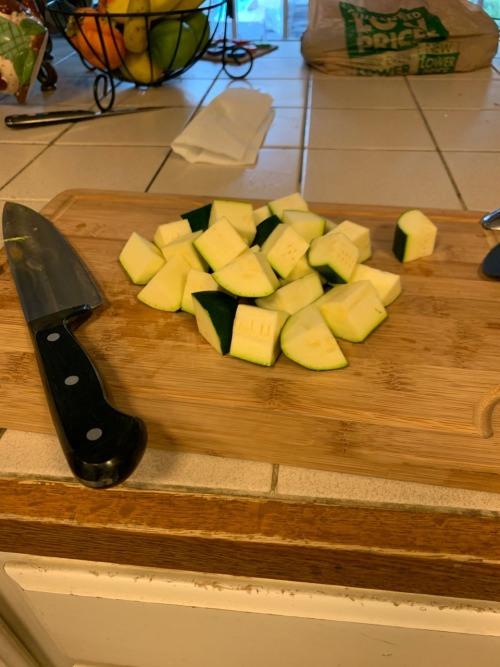
Put frying pan on medium heat with a little oil. Tubers or mushrooms or go in the pan a few minutes before the protein. 2 portions of the protein goes in the pan, about 5 minutes with lid (don't worry you can still get a good sear on both sides)
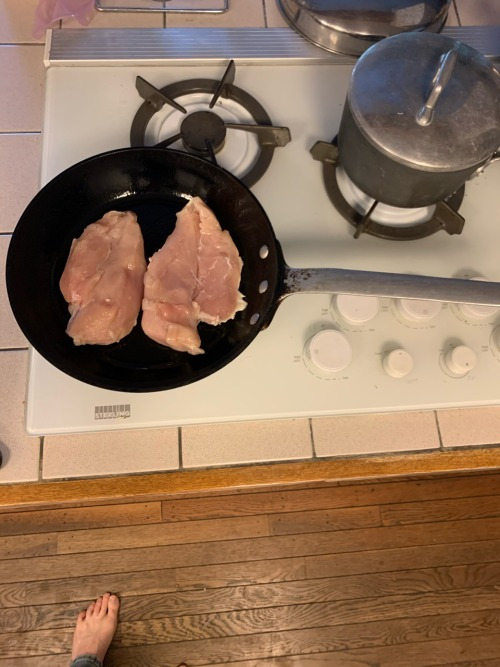

Now flip your protein if it's flip-able and add normal veggies, put the lid back on another five-ish minutes.
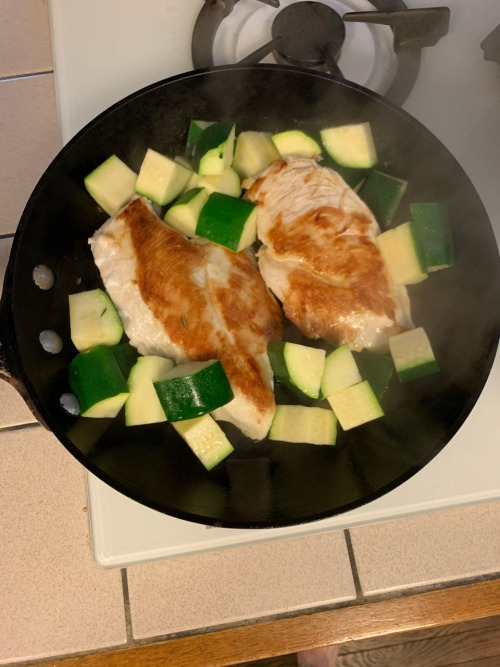
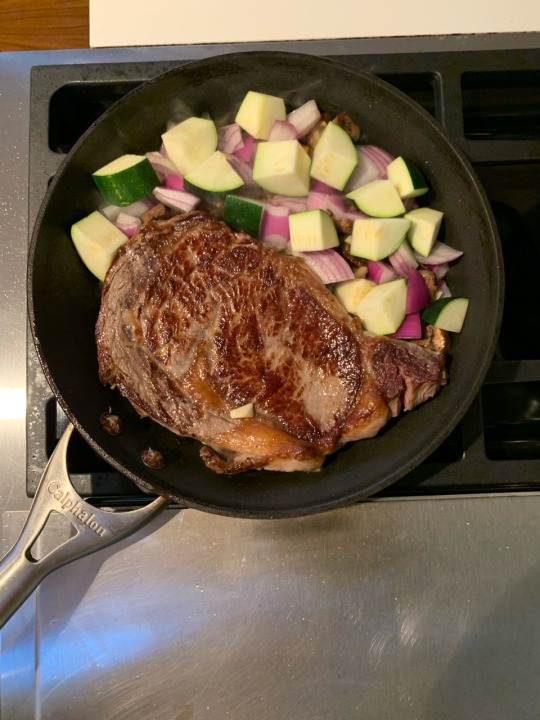
Take your protein out and put it with one portion of the veggies in a microwave safe container. That's going to be your lunch tomorrow. Put the other portion of protein on a plate to rest (you have to let a cooked protein sit a couple minutes before you serve it or when you cut into it all the juices run out and it goes dry - the liquids thicken as it cools, preventing this drying out if you let it rest, the goal is to serve it very warm but not hot hot)
While it's resting, pour some sauce from your bottle in the pan with the rest of the veggies and turn up the heat. A single sauce/bottle is fine, i like to get fancy and mix a couple. Two examples of personal favorite mixes are 1: bbq sauce and a hot sauce like sriracha 2: roughly equal parts low sodium soy sauce and worcestershire (makes something similar to a teriyaki sauce) A swallow of wine is almost always a great option if you want to add that to your sauce too, just add it to the pan before the other sauces so the alcohol has time to burn off.
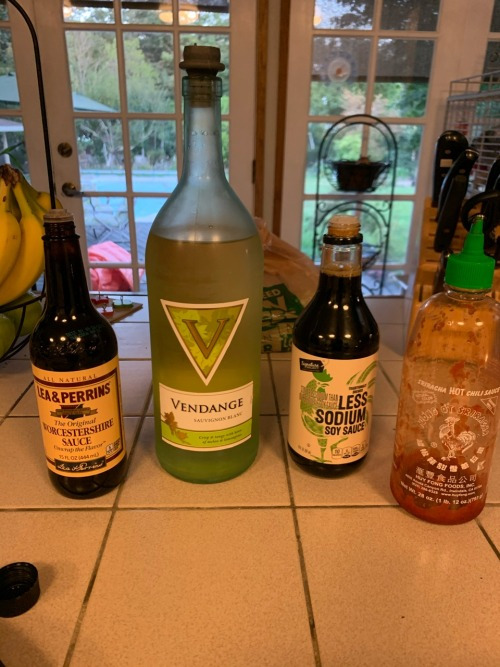
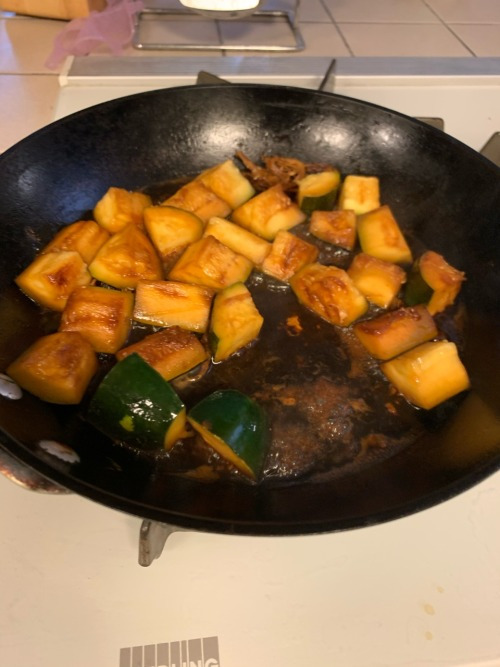
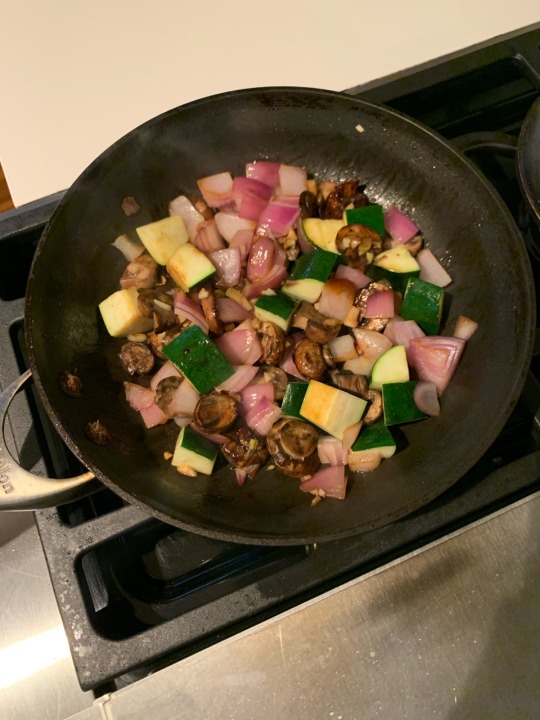
...
Here is the important bit. While your veggies are finishing, wash your cutting board and chef knife. Then when you dump your veggies and sauce over your protein on the plate, while it is still too hot to eat, you wash your frying pan and spatula before you eat. Now the only dishes you have left to do are your plate and fork. Maybe a steak knife.
...
The whole thing takes about 35 minutes even with washing the dishes, and that includes your lunch for the next day- just pour a different sauce on and stick it in the microwave for a couple minutes (or five minutes back in the frying pan) and you have a full healthy lunch with a different flavor
You can use this technique every single meal and it yields hundreds of combinations, from pork and potatoes bbq, to salmon and broccoli teriyaki, to chicken and zucchini in a soy glaze.
It will keep you down to less than an hour of kitchen time per day total for both lunch and dinner including all dish clean up, uses the least dishes, the least effort, requires the least technique, and is, depending on what you pick out, very affordable
here are a couple more examples from this month; i didn’t take pictures of the salmon i did recently, but you get the idea
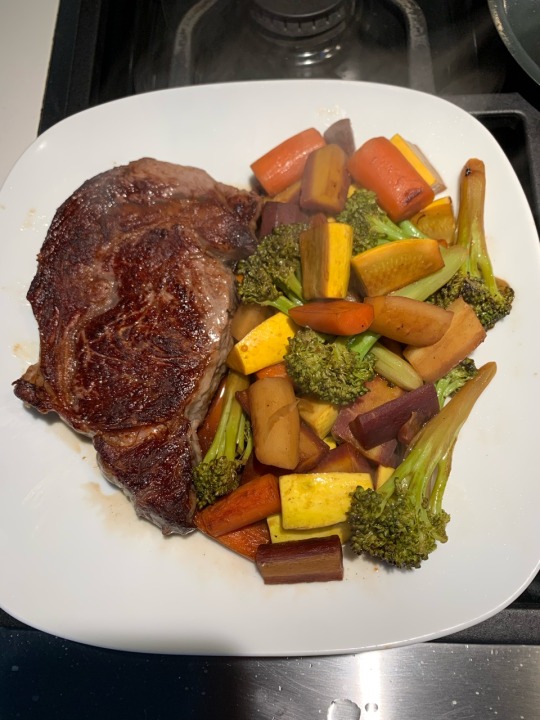
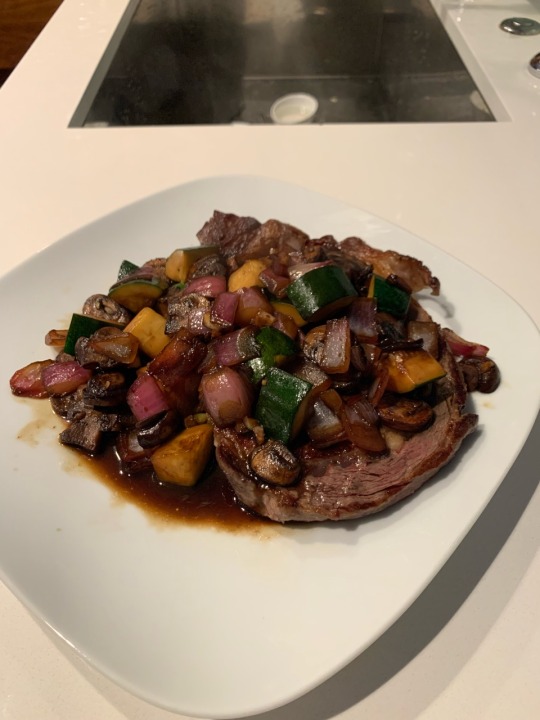
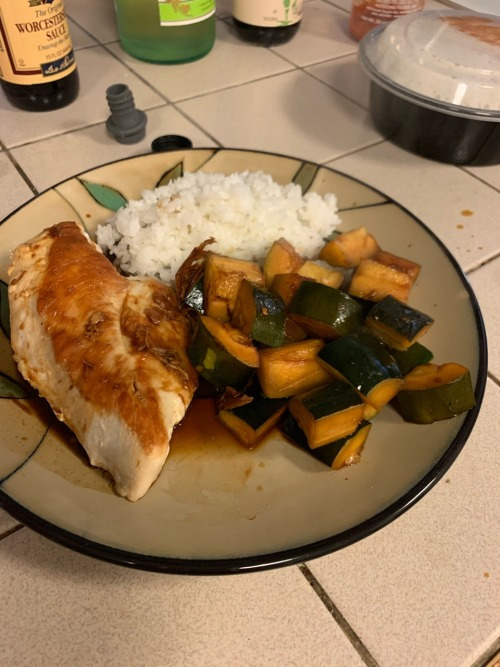
it's not super fancy, but it is easy, affordable, quick, and any flavors you want. Hope this helps some folks
Happy Cooking!
27K notes
·
View notes
Text
Ya'll might wanna grow some hyperaccumulators (such as sunflowers, oyster mushrooms, mustard greens, vetiver, etc) around your house and/or in your garden for a few years before you plant leafy vegetables so you don't end up consuming heavy metals.
48K notes
·
View notes
Text
Grinding whole spices is WORTH the cost and effort
Just wanted to remind folks that if flavor was color, pre-ground spices are pastels, and freshly-ground spices are vibrant fully-saturated jewel tones with an iridescent rainbow sheen.
I am not shilling, I will not link you to a brand or product.
But please, please put it on your future to-do list to acquire a ultra gritty (not smooth ceramic or glazed) spice grinder. Lava rock if you can. The mexican Molcajete works wonderfully. An electric grinder if you must.
Search for a local asian or latin supermarket for cheap whole spices in bulk. Per-Pound, whole spices in a baggie are almost always cheaper than pre-ground bottles.
I am begging you, knees on the ground and tears in my eyes, to please, just once, go buy a tiny amount of good-quality cinnamon bark.
It should be a lovely medium-brown color with a soft orange tint, not nearly black with age. It should look a little soft and crumbly around the cut edges. Look for the flat pieces, which haven't curled into rolls from dryness.

Break a little piece off. Less than the size of your thumbnail. Crush or grind it however you can. Smash it with a hammer, make dust with sandpaper, however you want.
And stick it in your mouth.
A tiny amount of freshly ground cinnamon bark is heady, fruity, sweet, floral, and has a warm spice that breathes down your throat. You can chew on bits of the bark like candy, it's so sweet and good.
Pre-ground cinnamon tastes like bitter dust and betrayal by comparison.
The really old, dry as dust cinnamon sticks that look so dark brown they're nearly black... you can grind those up too, it'll improve the flavor, but it's about three steps behind the fresh stuff. Kingdoms fought wars over fresh cinnamon. Kings traded war prisoners for pounds of cinnamon, and I get it. I understand.
If you can afford it, if you want an earth-shaking treat, please consider: Whole Nutmegs, Good Cinnamon, Whole Cloves, and Whole Peppercorns.
And some method of grinding them.
2K notes
·
View notes
Text
"Should parents read their daughter's texts or monitor her online activity for bad language and inappropriate content?"
Earlier today, I served as the “young woman’s voice” in a panel of local experts at a Girl Scouts speaking event. One question for the panel was something to the effect of, “Should parents read their daughter’s texts or monitor her online activity for bad language and inappropriate content?”
I was surprised when the first panelist answered the question as if it were about cyberbullying. The adult audience nodded sagely as she spoke about the importance of protecting children online.
I reached for the microphone next. I said, “As far as reading your child’s texts or logging into their social media profiles, I would say 99.9% of the time, do not do that.”
Looks of total shock answered me. I actually saw heads jerk back in surprise. Even some of my fellow panelists blinked.
Everyone stared as I explained that going behind a child’s back in such a way severs the bond of trust with the parent. When I said, “This is the most effective way to ensure that your child never tells you anything,” it was like I’d delivered a revelation.
It’s easy to talk about the disconnect between the old and the young, but I don’t think I’d ever been so slapped in the face by the reality of it. It was clear that for most of the parents I spoke to, the idea of such actions as a violation had never occurred to them at all.
It alarms me how quickly adults forget that children are people.
484K notes
·
View notes
Text
I'm so serious about being kind above all else. it has genuinely changed the way I interact with the world on a fundamental level and has made me so so much happier.
30K notes
·
View notes
Text
I’m about to save you thousands of dollars in therapy by teaching you what I learned paying thousands of dollars for therapy:
It may sound woo woo but it’s an important skill capitalism and hyper individualism have robbed us of as human beings.
Learn to process your emotions. It will improve your mental health and quality of life. Emotions serve a biological purpose, they aren’t just things that happen for no reason.
1. Pause and notice you’re having a big feeling or reaching for a distraction to maybe avoid a feeling. Notice what triggered the feeling or need for a distraction without judgement. Just note that it’s there. Don’t label it as good or bad.
2. Find it in your body. Where do you feel it? Your chest? Your head? Your stomach? Does it feel like a weight everywhere? Does it feel like you’re vibrating? Does it feel like you’re numb all over?
3. Name the feeling. Look up an emotion chart if you need to. Find the feeling that resonates the most with what you’re feeling. Is it disappointment? Heartbreak? Anxiety? Anger? Humiliation?
4. Validate the feeling. Sometimes feelings misfire or are disproportionately big, but they’re still valid. You don’t have to justify what you’re feeling, it’s just valid. Tell yourself “yeah it makes sense that you feel that right now.” Or something as simple as “I hear you.” For example: If I get really big feelings of humiliation when I lose at a game of chess, the feeling may not be necessary, but it is valid and makes sense if I grew up with parents who berated me every time I did something wrong. So I could say “Yeah I understand why we are feeling that way given how we were treated growing up. That’s valid.”
5. Do something with your body that’s not a mental distraction from the feeling. Something where you can still think. Go on a walk. Do something with your hands like art or crochet or baking. Journal. Clean a room. Figure out what works best for you.
6. Repeat, it takes practice but is a skill you can learn :)
68K notes
·
View notes
Text
idk when we decided that explaining yourself shouldn't be part of an apology but like. if someone was a dick to me and apologizes but I still don't understand why they did it I'm not gonna feel any better
173K notes
·
View notes
Text
It’s solar and wind and tidal and geothermal and hydropower.
It’s plant-based diets and regenerative livestock farming and insect protein and lab-grown meat.
It’s electric cars and reliable public transit and decreasing how far and how often we travel.
It’s growing your own vegetables and community gardens and vertical farms and supporting local producers.
It’s rewilding the countryside and greening cities.
It’s getting people active and improving disabled access.
It’s making your own clothes and buying or swapping sustainable stuff with your neighbours.
It’s the right to repair and reducing consumption in the first place.
It’s greater land rights for the commons and indigenous peoples and creating protected areas.
It’s radical, drastic change and community consensus.
It’s labour rights and less work.
It’s science and arts.
It’s theoretical academic thought and concrete practical action.
It’s signing petitions and campaigning and protesting and civil disobedience.
It’s sailboats and zeppelins.
It’s the speculative and the possible.
It’s raising living standards and curbing consumerism.
It’s global and local.
It’s me and you.
Climate solutions look different for everyone, and we all have something to offer.
45K notes
·
View notes
Text
a quick “why is my life so bad” checklist
how’s your sleep schedule
have you eaten or drank anything besides sugar and caffeine
how long have you been sitting in one spot
have you gone out in public recently
have you taken a shower/brushed your teeth/groomed yourself properly
have you spent time doing an activity that doesn’t involve a screen
etc
60K notes
·
View notes